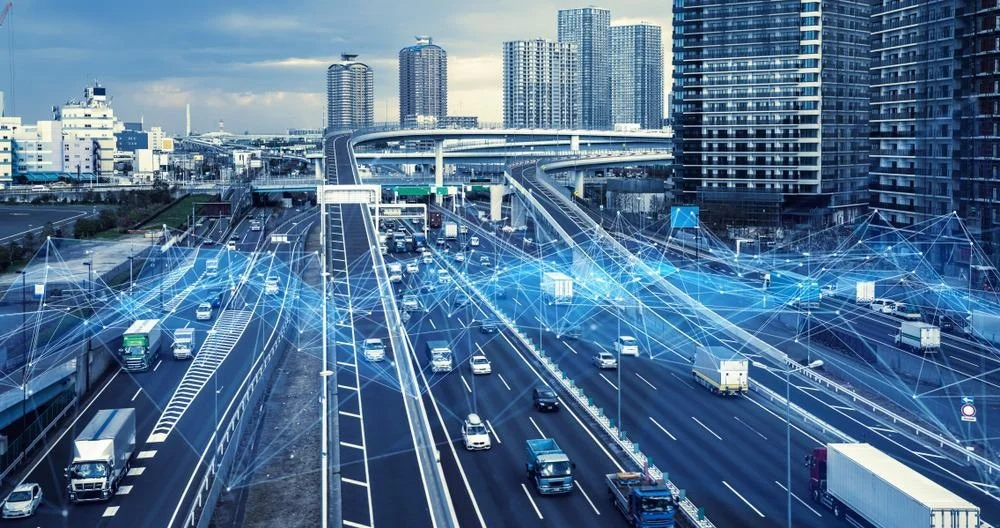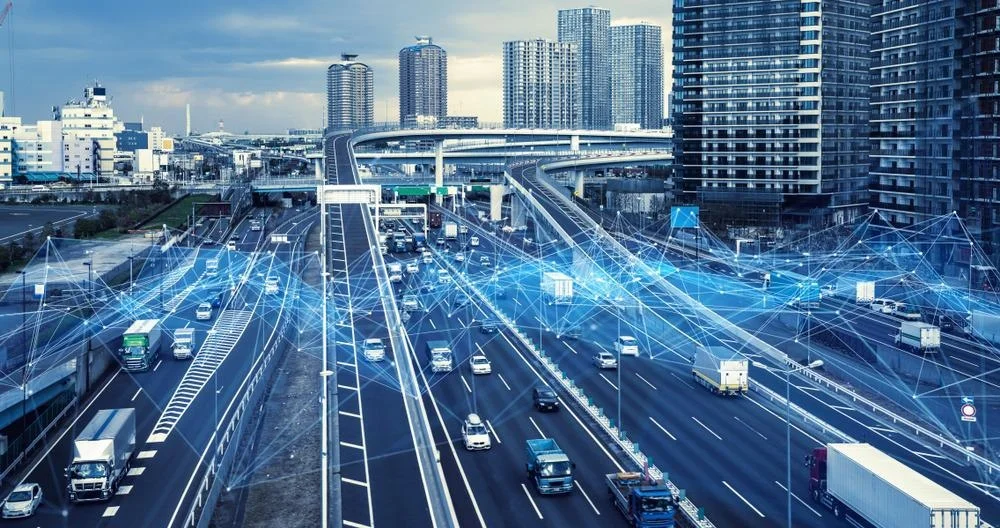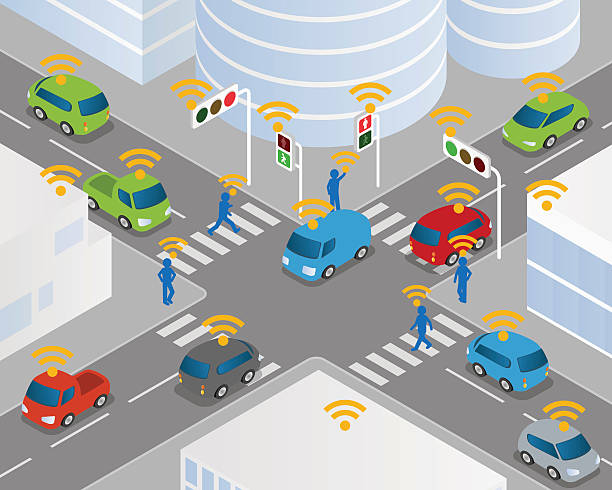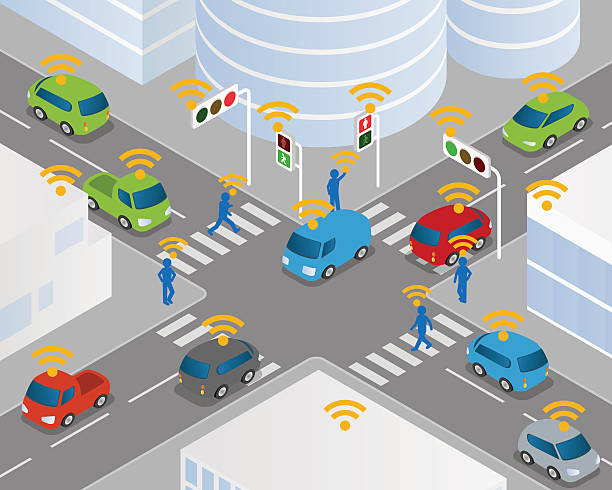Smart Roads are revolutionizing the way engineers, architects and construction cost estimators work. They have the potential to improve the efficiency and cost-effectiveness of road construction and maintenance. Smart roads are being rapidly implemented around the world. In this blog, we discuss the benefits and potential of Smart Roads and how they can help revolutionize the entire transportation sector.
Benefits of smart roads
One of the main benefits of smart roads is that they have the potential to reduce traffic congestion. Using dynamic routes and real-time traffic information, Smart Roads can direct vehicles to the most efficient routes, helping to reduce travel times and congestion.
Smart roads can also help reduce the environmental impact of transport by reducing traffic congestion and reducing emissions of harmful pollutants. Additionally, smart roads can be equipped with solar panels and other renewable energy technologies that can help offset the carbon footprint of transportation.
Smart Roads help improve road safety by providing real-time information about traffic conditions and hazards. Smart Roads can help drivers avoid accidents. Additionally, Smart Roads can be equipped with automatic braking and other safety features that can help reduce the severity of accidents.
Extending the concept further, smart roads can also be used to monitor weather conditions and alert drivers to flash floods through roadside projection systems.


Potential of smart roads
The potential of Smart Roads is enormous. In addition to the aforementioned benefits, smart roads can also help improve the efficiency of emergency services by providing real-time information on traffic conditions and accidents. Smart roads can also be used to charge electric vehicles and power traffic lights and other road infrastructure.
The benefits of Smart Roads are numerous. In addition to the aforementioned benefits, smart roads can also help improve the efficiency of emergency services by providing real-time information on traffic conditions and accidents. Smart roads can also be used to charge electric vehicles and power traffic lights and other infrastructure.
Smart road technologies
Interactive lights
Motion sensors turn on street lights and illuminate a specific area of the road when vehicles approach. As soon as the car passes, the light goes out. Interactive lighting, best suited to streets with little traffic, improves visibility at night when needed and uses less energy when there are no cars on the road. Even in cities with heavy traffic, this idea can significantly reduce energy consumption because there are fewer vehicles on the roads in the late hours of the night.
Smart intersections
At each intersection, four cameras mounted above the traffic lights record aerial photos of surrounding cars and pedestrians from a distance of up to 90 meters. Proprietary image processing software then uses specialized short-range communications technology to create a 360-degree image of the intersection, categorizing vehicles and other moving objects, such as pedestrians, motorcycles, and emergency vehicles, and sending information important to neighboring vehicles.
The on-board computer of each connected vehicle decodes the data and, if necessary, informs the driver through visual and acoustic signals and intuitively guides him to take the correct measures to avoid a possible collision.
Solar-powered roads
Smart highways built with special solar-powered road panels can provide intelligent lighting, heating and other road functions.
Thanks to Solar Roadways' creative product, specially designed roadside solar panels, all of this would be possible. If these road panels were installed in place of traditional asphalt, they would generate clean, renewable solar energy while allowing for smooth normal vehicle movement. Among many other benefits, converting a portion of our streets and paths into solar roads would generate enough clean energy to meet all our needs.
Electrified roads – charging stations for electric vehicles
Electric motors are considered a key technology for the transport industry, which can reduce its carbon footprint. Using commercial electric vehicles to transport goods over long distances is particularly difficult. For long-distance transport, where frequent charging pauses make timely deliveries difficult, the battery capacity of successful urban logistics vehicles with ranges between 130 and 160 km is not sufficient. Larger batteries, which allow sufficient range, are so heavy that they significantly reduce maximum payload.
The basic idea behind electric highways is incredibly simple: all cars using the road at any given time must have access to the power provided by the road infrastructure. Typically, power is transmitted directly to cars through inductive coils or conductive rails in overhead or underground power lines.
Most electric highway systems currently in operation around the world only allow the use of overhead lines for commercial purposes. However, experts believe that earth-based energy systems are the most economical.


Weather detection
Bad weather has been considered an important factor contributing to road accidents due to its adverse effects on visibility and road conditions. To ensure safe driving in adverse weather conditions, it is important to give drivers access to real-time weather information. The placement of expensive weather stations and frequent identification and/or manual inspection make it difficult to identify weather conditions and the road surface.
Machine vision and machine vision techniques are required to detect weather and road conditions through cameras. Much research has focused on using automotive camera systems to monitor weather and road conditions.
Traffic detection
AI-powered smart streets integrate traffic data from tens of thousands of cameras, detectors, traffic lights and parking meters to reduce car accidents, increase road efficiency, reduce congestion and ultimately help urban planners eliminate bottlenecks.
Crossings with a large volume of traffic, where traffic jams and accidents frequently occur, are the focus of traffic control. Simple traffic signs are not enough to distribute traffic. We need systems that can adapt depending on road conditions. In this area, AI is widely used in both large cities and small towns to successfully maintain traffic flow in difficult driving situations.


Wireless transport and network, intelligent transport systems, Internet of Things, vector illustration
Detection of traffic violations
As authorities constantly monitor the roads, a real-time system is needed to detect traffic violations. As a result, it will not be a problem for traffic enforcement officers to ensure traffic safety accurately and effectively since the traffic enforcement system detects violations faster than humans.
Estrada produces music
A road or section of road that produces an audible noise and a tactile vibration that can be felt through the wheels and body of the car is called a musical road. This rumble, in the form of a musical melody, can be heard both inside and outside the car. There are currently recognized music streets in China, Iran, Taiwan, Indonesia, Japan, South Korea, Denmark, Hungary, Japan and South Korea. They also used to be common in France and the Netherlands.
Smart Digital Traffic Signs
Analog traffic signals are converted to digital in smart streets by combining a radio transceiver with a client-server digital signage architecture. The respective signal is then transmitted wirelessly to oncoming traffic. The wireless signaling signal is received by a receiver unit in the car, which informs the driver (verbally or visually) of its presence. This means drivers no longer need to pay attention to signs.
Automatic weighing
Roads are frequently used for both the transport of goods and people. In many countries, road transport is a crucial part of the freight transport industry. Overloaded trucks can be dangerous on the road, as they often travel at high speeds, brake suddenly, or make abrupt turns and turns. The truck's compliance with weight and safety regulations must therefore be checked frequently. Technological advances over time have transformed static weighing into weighing in motion and virtual weighing.
Smart individual traffic lights
The function of a smart traffic light, i.e. an Internet-connected vehicle traffic control system, is to adjust traffic light control based on data collected from sensors, edge devices and video systems.
Smart traffic lights at intersections are similar to traditional traffic lights except for additional hardware components such as IoT sensors and/or connected CCTV cameras. On the backend, cloud-based traffic control platforms are connected to intelligent traffic light systems. Predictive algorithms are often used to provide power so that traffic lights can be dynamically adjusted.
Roads with V2X and VANETs – cars that talk
Modern vehicles with driver assistance systems will be able to see, hear and, in the future, speak through cameras. Communication between vehicles and transport infrastructure is enabled by the latest technology in intelligent cooperative transport systems and services. Cooperative Intelligent Transportation Systems (CITS) can address safety-critical applications using Vehicular Ad-hoc Networks (VANETs) that leverage connected vehicle technologies. Security-critical systems are mainly exposed to services and applications.
Emergency rescue architecture with V2X


Smart street lights
A smart street light is a type of outdoor lighting that uses technologies such as cameras, light-sensitive photocells, and other sensors to add real-time monitoring capabilities. This type of lighting system, also known as adaptive lighting or smart street lighting, is considered a crucial advancement in the creation of smart cities.
Installing smart lighting can increase citizens' satisfaction with safety and security, while also providing significant savings in electricity consumption and lighting system maintenance. Additionally, cities can provide the right amount of street lighting for local conditions. Additionally, outdoor lighting infrastructure forms the basis for other Internet of Everything (IoE) applications, including traffic, pollution, and weather monitoring.

